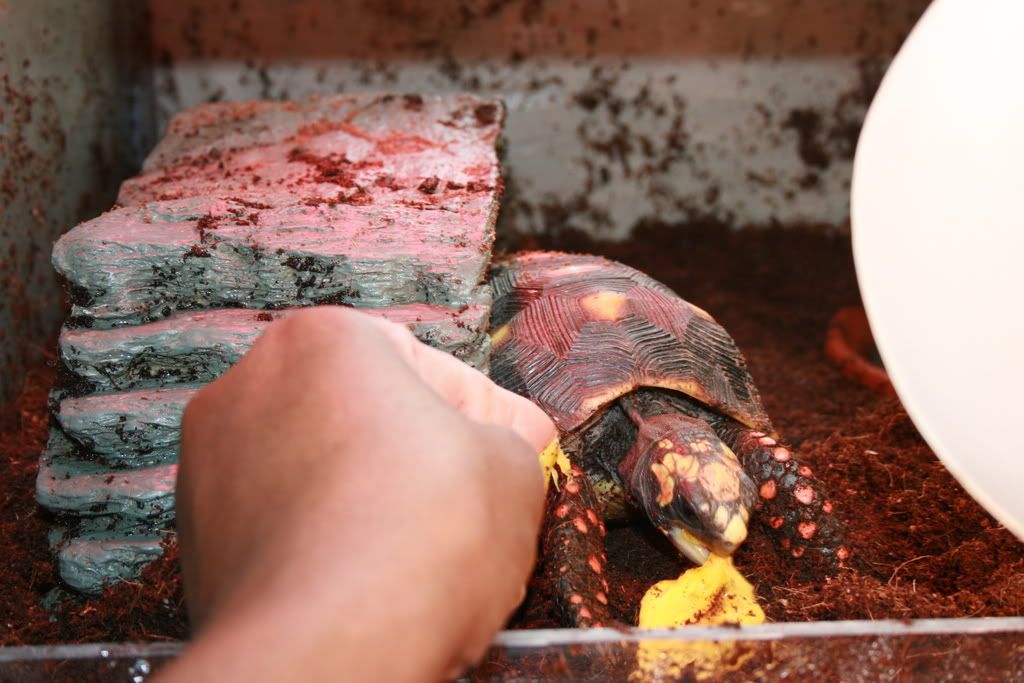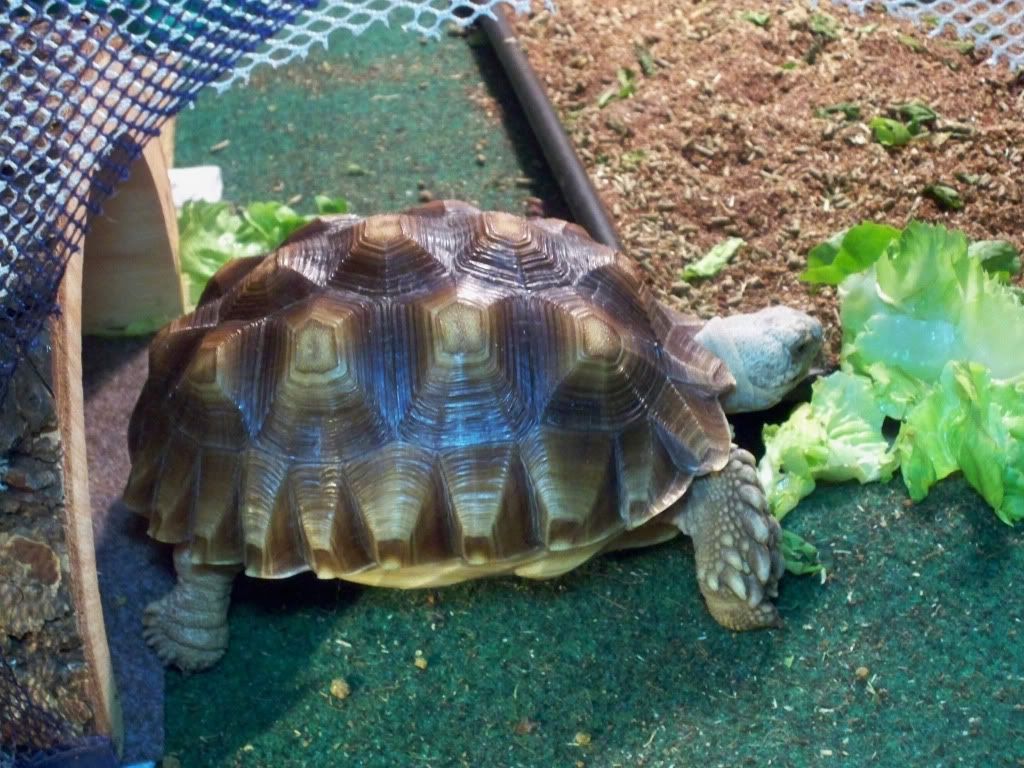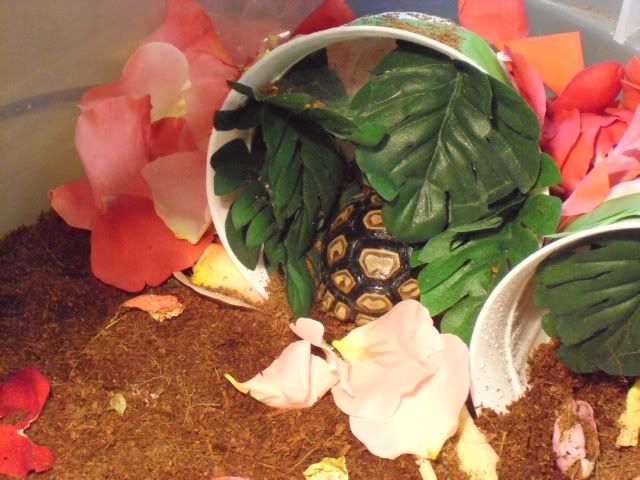I've been meaning to post this since last week, but work has been hectic. This is somewhat related to Maggies thread: http://tortoiseforum.org/thread-14007.html
I didn't want to hijack hers, so I've just started a new one here. About a week ago, I had the great pleasure of speaking with Richard Fife on the phone. He is a great human being even without all of his tortoise knowledge. He was very helpful and willing to share anything he knew. One of the things we talked about was pyramiding. He told me about something new that I had never heard before. Most people know about his experiments with hatchling tortoises in shoe boxes on damp or dry paper towels. The dry ones pyramid, the damp ones don't. Simple enough. He told me about a third, more recent experiment and with his permission I will relate it here.
He doesn't feel like he has done enough research to publish this, but there is obviously something to it. He took a third shoe box hatchling, kept it on DRY paper towels, removed it from the box twice a day, misted the shell until wet, put it back in the dry box, and......... no pyramiding. He is speculating that the water acts as a lubricant on the scute edges and allows them to grow out, instead of up. He further explained that hatchling Leopards and Sulcatas in the wild would have their shells pressed up against damp things most of the day and night too. A sulcata in a tight, damp burrow or a Leopard dug into the base of a plant or under some fallen leaf litter. He told me he thinks moisture, hydration and humidity are all important. I'm wondering if all this humidity we are all talking about, is just a way of keeping the shell "wet" and lubricating the scute edges. Maybe all we have to do is mist their shells several times a day and then we can leave the air more "dryish" to avoid the URTI's that we frequently hear about with the Leopards.
So, back to Maggies thread, I'm wondering if Vicky is misting her enclosure regularly and when the tortoise passes under the plastic plants, or goes in to the mossy hide area the shell gets wet. In other words: Is her technique is working because of the pressure, or because of the moisture on the shell? In Richard's experiment, nothing was touching the shell except water and his babies were totally smooth.
I've put moss in my hide boxes now. We'll see what it does to Daisy. More importantly, when I hatch out some babies in the next few months I will do some research into this, but that is yet another thread.
Input is welcome here. Please try to shoot it down OR build it up. No one will learn anything from NOT talking about it.
I didn't want to hijack hers, so I've just started a new one here. About a week ago, I had the great pleasure of speaking with Richard Fife on the phone. He is a great human being even without all of his tortoise knowledge. He was very helpful and willing to share anything he knew. One of the things we talked about was pyramiding. He told me about something new that I had never heard before. Most people know about his experiments with hatchling tortoises in shoe boxes on damp or dry paper towels. The dry ones pyramid, the damp ones don't. Simple enough. He told me about a third, more recent experiment and with his permission I will relate it here.
He doesn't feel like he has done enough research to publish this, but there is obviously something to it. He took a third shoe box hatchling, kept it on DRY paper towels, removed it from the box twice a day, misted the shell until wet, put it back in the dry box, and......... no pyramiding. He is speculating that the water acts as a lubricant on the scute edges and allows them to grow out, instead of up. He further explained that hatchling Leopards and Sulcatas in the wild would have their shells pressed up against damp things most of the day and night too. A sulcata in a tight, damp burrow or a Leopard dug into the base of a plant or under some fallen leaf litter. He told me he thinks moisture, hydration and humidity are all important. I'm wondering if all this humidity we are all talking about, is just a way of keeping the shell "wet" and lubricating the scute edges. Maybe all we have to do is mist their shells several times a day and then we can leave the air more "dryish" to avoid the URTI's that we frequently hear about with the Leopards.
So, back to Maggies thread, I'm wondering if Vicky is misting her enclosure regularly and when the tortoise passes under the plastic plants, or goes in to the mossy hide area the shell gets wet. In other words: Is her technique is working because of the pressure, or because of the moisture on the shell? In Richard's experiment, nothing was touching the shell except water and his babies were totally smooth.
I've put moss in my hide boxes now. We'll see what it does to Daisy. More importantly, when I hatch out some babies in the next few months I will do some research into this, but that is yet another thread.
Input is welcome here. Please try to shoot it down OR build it up. No one will learn anything from NOT talking about it.









